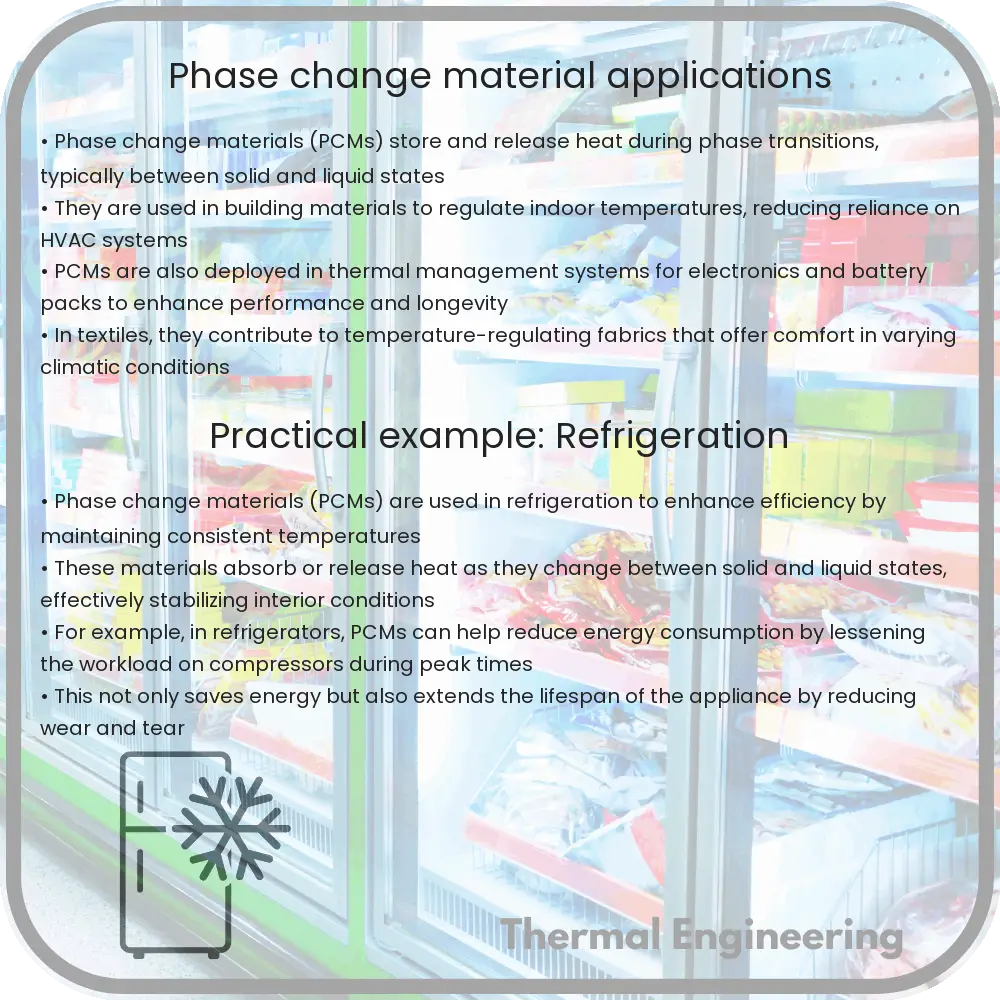Learn about Phase Change Materials (PCMs), substances that store and release energy by shifting between solid and liquid states.

Understanding Phase Change Materials and Their Applications
Phase change materials (PCMs) are substances with a high heat of fusion which, melting and solidifying at a certain temperature, are capable of storing and releasing large amounts of energy. Heat is absorbed or released when the material changes from solid to liquid and vice versa; this property of PCMs is utilized in various engineering applications, ranging from improving building energy efficiency to enhancing the performance of electronic devices.
How Phase Change Materials Work
At the most basic level, the effectiveness of a phase change material comes from its ability to absorb and release heat during phase transitions. In the solid phase, the material absorbs heat and transitions to a liquid phase at a relatively constant temperature. Once the material has melted, it can store a significant amount of heat in the liquid phase. Conversely, when the temperature drops, the material releases this stored heat as it solidifies, again at a nearly constant temperature. This thermal property of PCMs can be measured in terms of latent heat capacity, which is usually much higher than sensible heat capacity.
Applications of Phase Change Materials
- Building and Construction: In building applications, PCMs are integrated into materials like wallboard, concrete, and floor tiles to help moderate indoor temperatures. By melting and solidifying at predetermined temperatures, PCMs can absorb excess heat from the indoor environment during the day and release it at night, reducing the need for traditional heating and cooling systems.
- Energy Storage: PCMs can be used in thermal energy storage systems to improve the efficiency of solar power plants and heat pumps. The high energy storage density of PCMs allows them to store thermal energy during peak sunlight hours and release it during periods of low solar radiation.
- Textiles: Incorporating PCMs into textiles can enhance wearer comfort by regulating body temperature in varying climatic conditions. This is particularly beneficial in outdoor and sports apparel, where temperature fluctuations are common.
- Electronics Cooling: In electronic devices, thermal management is crucial for maintaining performance and extending lifespan. PCMs can absorb and distribute the heat generated by electronic components efficiently, thus maintaining optimal operating temperatures and preventing overheating.
Future Prospects
The application of phase change materials is seen as a promising strategy in various fields that require efficient thermal management solutions. As the demand for energy-efficient products and sustainable practices continues to grow, the development of advanced PCM technologies and their applications appears increasingly lucrative. Innovations in PCM encapsulation and composite materials are making these systems more effective and practical, promising broader future applications in industries like aerospace, automotive, and buildings, contributing to energy conservation and efficiency.
By harnessing the unique properties of PCMs, engineers and scientists continue to develop solutions that address some of the most pressing challenges of our time, including energy conservation, climate control, and electronic device optimization. As research progresses, the versatility of phase change materials is likely to expand, opening new pathways for both economic and environmental advancements.